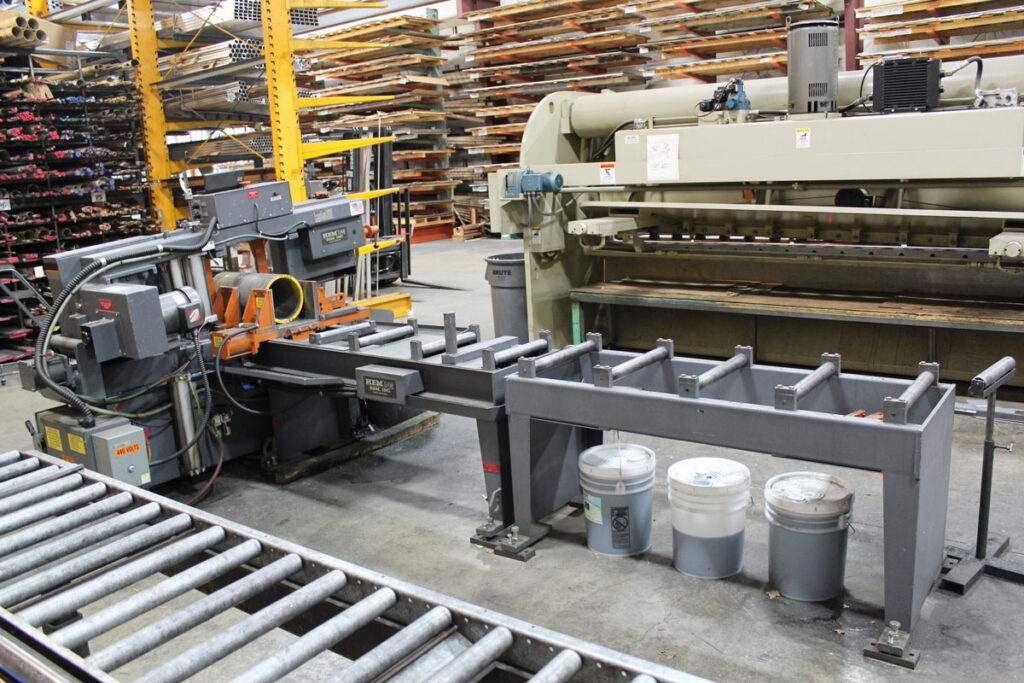The importance of cutting tolerance in industrial saw manufacturing is often underestimated, yet it plays a crucial part in determining the quality, reliability, and consistency of every final product. Maintaining accurate tolerance levels ensures that each cut aligns with industry expectations, customer requirements, and material-specific demands. Whether used in large-scale lumber operations, metal fabrication facilities, or custom manufacturing environments, saws must deliver dependable results with minimal deviation. We will explore how cutting tolerance affects performance, durability, safety, and production workflow in modern industrial settings. Understanding these impacts helps manufacturers and facility operators make informed decisions when selecting saw systems that fit their operational goals.
How Cutting Tolerance Shapes Industrial Saw Performance
1. Precision and Material Efficiency
Cutting tolerance directly influences the precision of each cut, which determines how efficiently raw material is utilized. Industrial saws that operate within tight tolerance ranges reduce the amount of excess material removed during processing, and equipment from manufacturers like https://www.pacifictrailmfg.com/ supports these goals by delivering dependable cutting performance. This efficiency enables companies to reduce waste, lower material costs, and enhance sustainability in their operations. When tolerance levels are inconsistent, operators may face repeated corrections, increased scrap, or the need for additional finishing processes. The impact extends beyond simple accuracy; it affects how smoothly a production line runs and how consistently products meet dimensional requirements.
In facilities where high production volumes are the norm, every millimeter matters. Tight cutting tolerance ensures that each piece fits perfectly into its intended design without requiring unnecessary adjustments, thereby helping businesses streamline their operations. Manufacturers such as those designing heavy-duty saw systems understand that tolerance is not only a technical metric—it is also a factor that shapes productivity and customer satisfaction across multiple industries.
2. Impact on Machinery Longevity and Durability
Maintaining proper cutting tolerance also supports the overall longevity and durability of industrial saw machinery. When a saw operates within its intended design parameters, the mechanical components undergo less strain. This controlled operation reduces wear on blades, motors, and feed mechanisms. However, when tolerance deviates, it can cause unexpected stress on the machine’s moving parts, leading to premature breakdowns or costly repairs. Industrial saws are typically used in demanding environments where reliability is essential, so preventing unnecessary wear is crucial.
High-quality saw systems are engineered to maintain consistent tolerance even under heavy workloads, ensuring smoother performance over time. Operators experience fewer maintenance interruptions, and facilities gain improved production reliability. By understanding how cutting tolerance affects mechanical function, businesses can make strategic decisions about equipment selection and maintenance schedules. Ultimately, accurate tolerance contributes to building machines that deliver long-term value, withstand demanding conditions, and support continuous workflow without sacrificing performance.
3. Operational Safety and Worker Confidence
Cutting tolerance also plays an important role in operational safety. When an industrial saw maintains predictable and stable tolerance levels, the cutting process becomes smoother and more controlled. This consistency reduces the risk of blade binding, material kickback, and unexpected machine movements—conditions that can create hazardous situations for operators. In environments where large or dense materials are processed, even small deviations in tolerance can lead to dangerous outcomes.
A saw that cuts too aggressively or too loosely may compromise the structural integrity of the workpiece, increasing the chance of accidents. Maintaining proper tolerance helps ensure that equipment responds reliably, boosting operator confidence and supporting a safer workplace. Stability in performance allows workers to focus on precision and productivity rather than managing unpredictable machine behavior. Additionally, facilities that prioritize accurate tolerance often experience fewer shutdowns caused by safety incidents, resulting in smoother workflows and more consistent output across all shifts.
4. Production Consistency and Meeting Customer Requirements
In industrial markets, customers expect consistency across every order. Cutting tolerance plays a key role in ensuring that each piece produced matches the required specifications. Whether cutting metal beams, lumber, plastic components, or composite materials, consistent tolerance ensures product uniformity. This uniformity is essential for companies that supply parts intended for assembly, as even minor deviations can cause misalignment or structural weakness. Industrial saw systems that maintain accurate tolerance allow manufacturers to meet strict customer expectations without frequent rework or adjustments. This reliability strengthens business relationships and helps companies build a reputation for quality.
In high-volume industries, maintaining tolerance becomes even more critical because small errors can accumulate into significant defects when repeated thousands of times. Saw manufacturing companies design their equipment to deliver repeatable performance, allowing operators to maintain confidence in every cut. By recognizing the influence of tolerance on final product consistency, businesses can implement quality control measures that reduce variability and improve overall production outcomes.
Cutting tolerance holds substantial influence over the performance, reliability, and safety of industrial saw systems. By maintaining precise tolerance levels, manufacturing operations benefit from improved material efficiency, increased machinery longevity, enhanced workplace safety, and consistent product quality. When businesses invest in saw equipment designed with accurate and stable tolerance ranges, they reduce operational challenges while improving the overall value of their production capabilities. Understanding the role of cutting tolerance enables companies to select equipment that aligns with their long-term objectives and maintains a high standard of performance across various applications.





